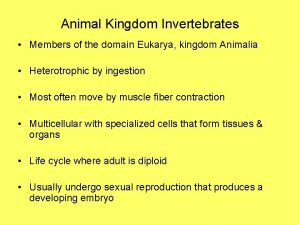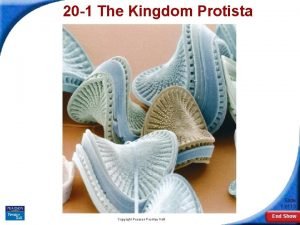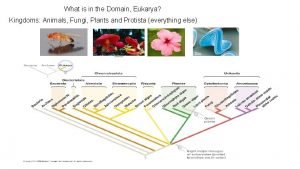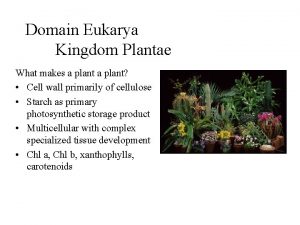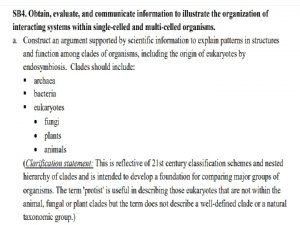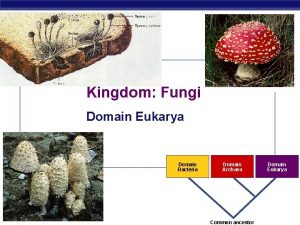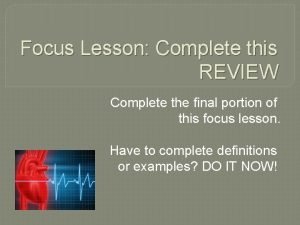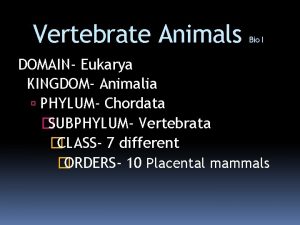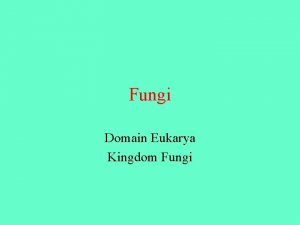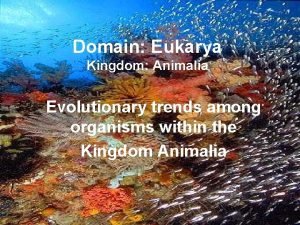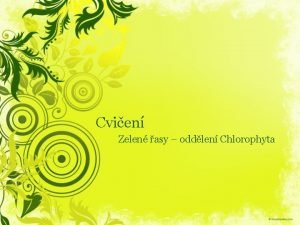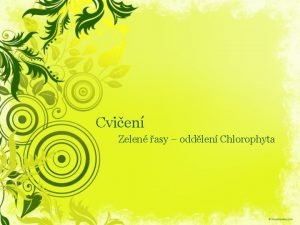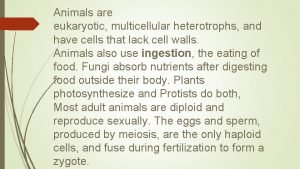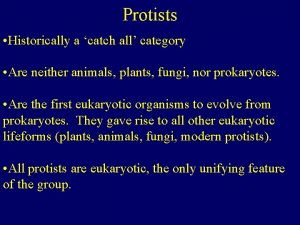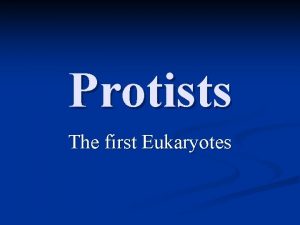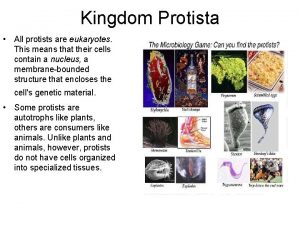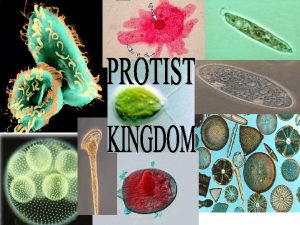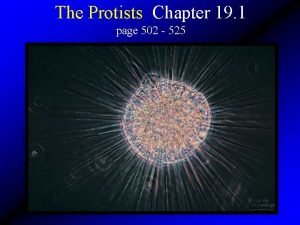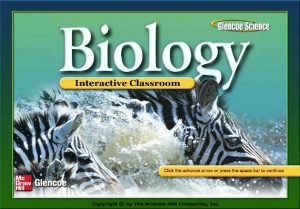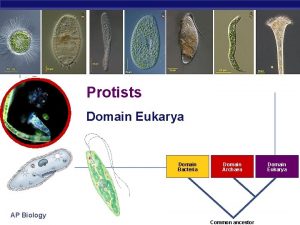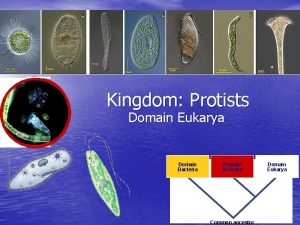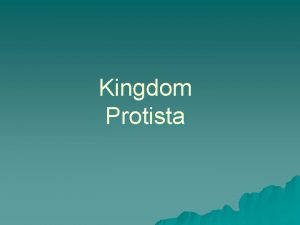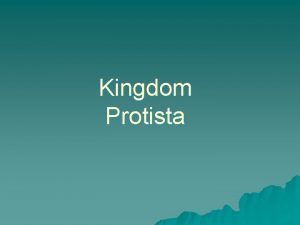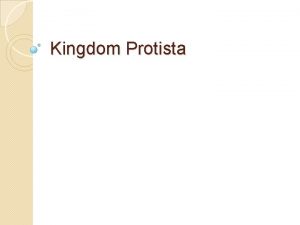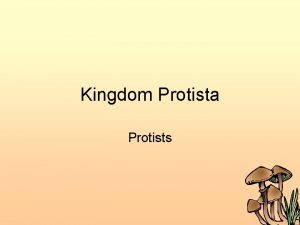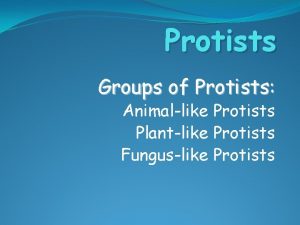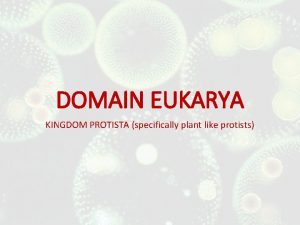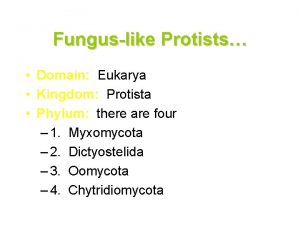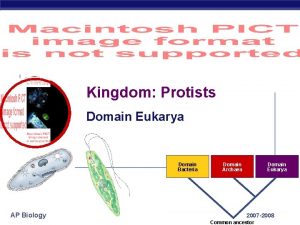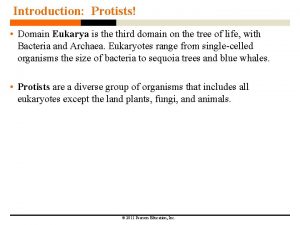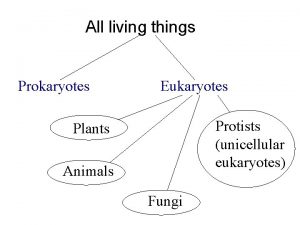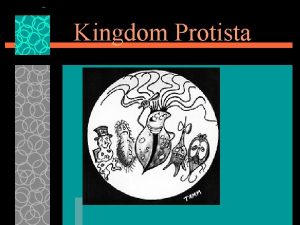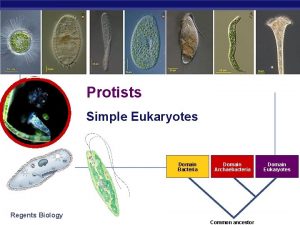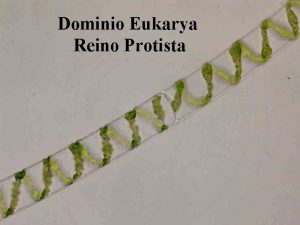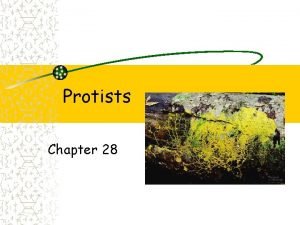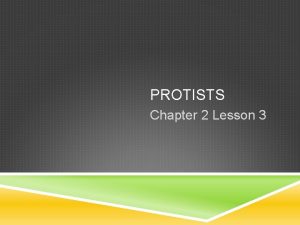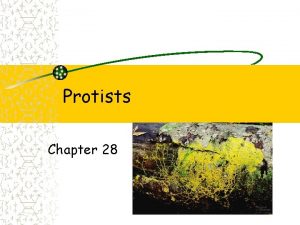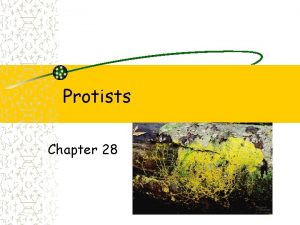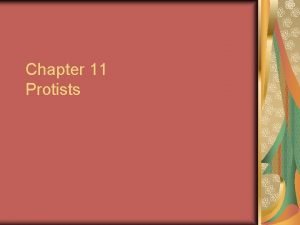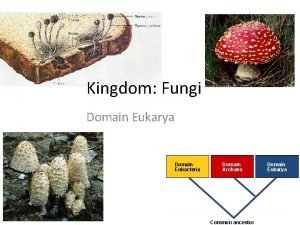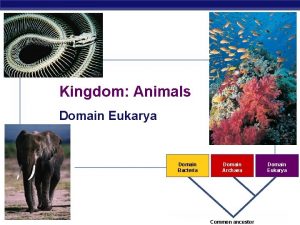PROTISTA CHAPTER 19 Protists All Eukaryotes Domain Eukarya


























- Slides: 26

PROTISTA CHAPTER 19

Protists All Eukaryotes (Domain Eukarya) Most unicellular, some multicellular, some colonial (volvox) Autotroph or heterotroph Some have chloroplasts

Classifcation Classified by what they are not rather than what they are By their method of obtaining nutrition Eukaryotes that do not belong to the plant, animal, or fungi kingdom

Categories of Classification How they obtain nutrition: Animal-Like – ex. Ameobas Plantlike – ex. Green algae Funguslike – ex. Mildew Table 19. 1 (p. 543)

Animal-Like Protists Like animals: Heterotrophs - (this means? ) Why are they not in the animal kingdom? Unlike animals: These are unicellular whereas organisms in the animal kingdom are multicellular

Plantlike Protists Like plants: Autotrophs - make own food through photosynthesis Unlike plants: Mostly unicellular Do not have roots, leaves, or other typical plant structures

Fuguslike Protists Like Fungus: Absorb their nutrients from other decaying organisms Unlike Fungus: Cell walls are different These do not have chitin in their cell walls (Fungi do)

Environment Found in damp or aquatic environments

Diverse Kingdom These organisms do not fit into the other kingdom categories This way they can still be classified in an organized fashion All protists have a common ancestral eukaryotic cell Eventually evolved to have mitochondria Some later evolved to have chloroplasts

Animal-Like Protists (Protozoans) Further classified by how they move Cilia Pseudopod Sporozoans Flagella

Cilia Short, hair-like projections (Fig. 19. 4) Used: To propel themselves through water To move food particles into the cell


Contractile Vacuoles (Water constantly enters the cell by osmosis) Collect excess water from the cytoplasm (in the paramecium) Expel it from the cell Help maintain homeostasis in the cell

Ciliate Reproduction (paramecia) Binary fission - asexual reproduction One cell splits into two Conjugation - not considered true reproduction because a new organisms in not formed Genetic information is exchanged Fig. 19 -6

Amoebas Use a pseudopod to surround a smaller organism, forming a food vacuole Oxygen and waste products diffuse in and out of the cell Fig. 19. 7 (p. 550)


Malaria (Fig. 19) Caused by a sporozoan (a parasite) that is spread by mosquitoes Symptoms: Fever, chills, other flulike symptoms Common in tropical and subtropical regions High temperature, humidity and rainfall

African Sleeping Sickness Caused by a zooflagellate that uses a Tsetse fly as its host The blood-sucking Tsetse fly bites an infected organism and then spreads it to a human Symptoms: fever, inflammation of the lymph notes, damage to the nervous system

Plantlike Protists Algae Do not have roots, leaves or other structures typical of plants Fig. 19. 11

Euglenoids - Plantlike Protists Euglena Have plantlike and animal-like characteristics Usually contain chloroplasts and photosynthesize Are green in color Fig. 19. 16


Volvox An alga that has a colonial growth pattern Grows as a colony May include hundreds or even thousands of cells that form a hollow ball Fig. 19 (p. 558)


Uses of Algae Food source for animals and people Very nutritious due to high protein content, minerals, and vitamins Table 19. 2 (p. 559)

Funguslike Protists - Slime Molds Use spores to reproduce Feed on decaying organic matter Absorb nutrients through their cell walls Found in damp, shady places Cell walls usually contain cellulose NEVER chitin (like true Fungi)

Where Algae Live Why must algae live at or near the surface of the water? Hint: What do they need to survive that would be easier to access at the surface of the water, rather than deeper in the water?
 Kingdom protista
Kingdom protista Domain eukarya kingdom animalia
Domain eukarya kingdom animalia Euglena es unicelular o pluricelular
Euglena es unicelular o pluricelular Dominio eukarya reino protista
Dominio eukarya reino protista Protist evolution
Protist evolution What is the domain
What is the domain Domain eukarya kingdom fungi
Domain eukarya kingdom fungi Plants
Plants Domain vs kingdom
Domain vs kingdom Domain biology
Domain biology Domain eukarya, kingdom animalia (or animal)
Domain eukarya, kingdom animalia (or animal) Is eubacteria in the domain eukarya
Is eubacteria in the domain eukarya Domain eukarya kingdom fungi
Domain eukarya kingdom fungi Domain eukarya
Domain eukarya Domain eukarya kingdom animalia
Domain eukarya kingdom animalia Fungi eukarya
Fungi eukarya Domain eukarya kingdom animalia
Domain eukarya kingdom animalia Cladophorophyceae
Cladophorophyceae Ulothrix crenulata
Ulothrix crenulata All animals are multicellular heterotrophs
All animals are multicellular heterotrophs Sarcodinia
Sarcodinia Protist characteristics
Protist characteristics All protists are
All protists are All protists are ________.
All protists are ________. Name all the lines name all the segments name all the rays
Name all the lines name all the segments name all the rays Sexual reproduction in paramecia is called _____.
Sexual reproduction in paramecia is called _____. Chapter 19 section 1 introduction to protists answer key
Chapter 19 section 1 introduction to protists answer key

